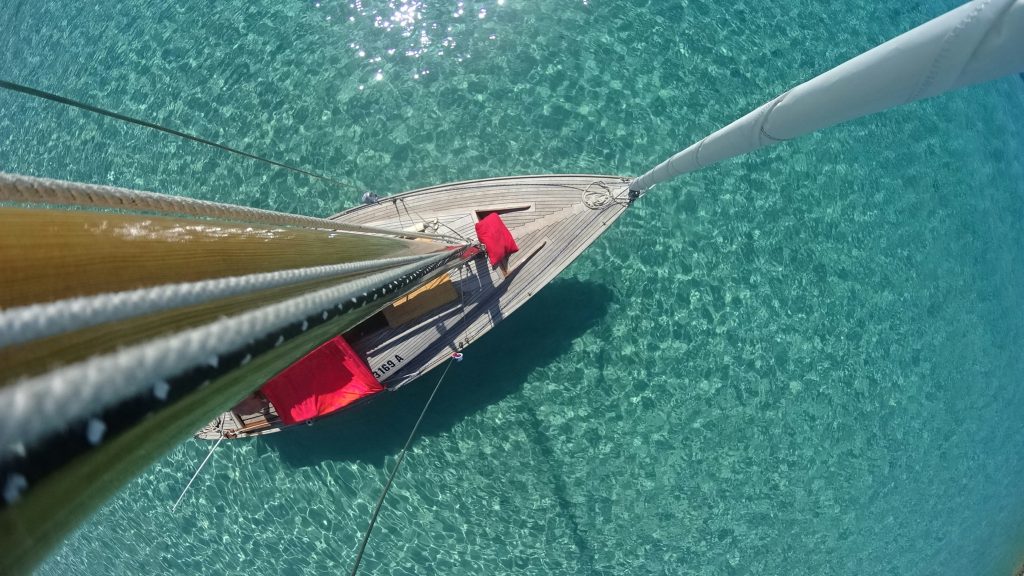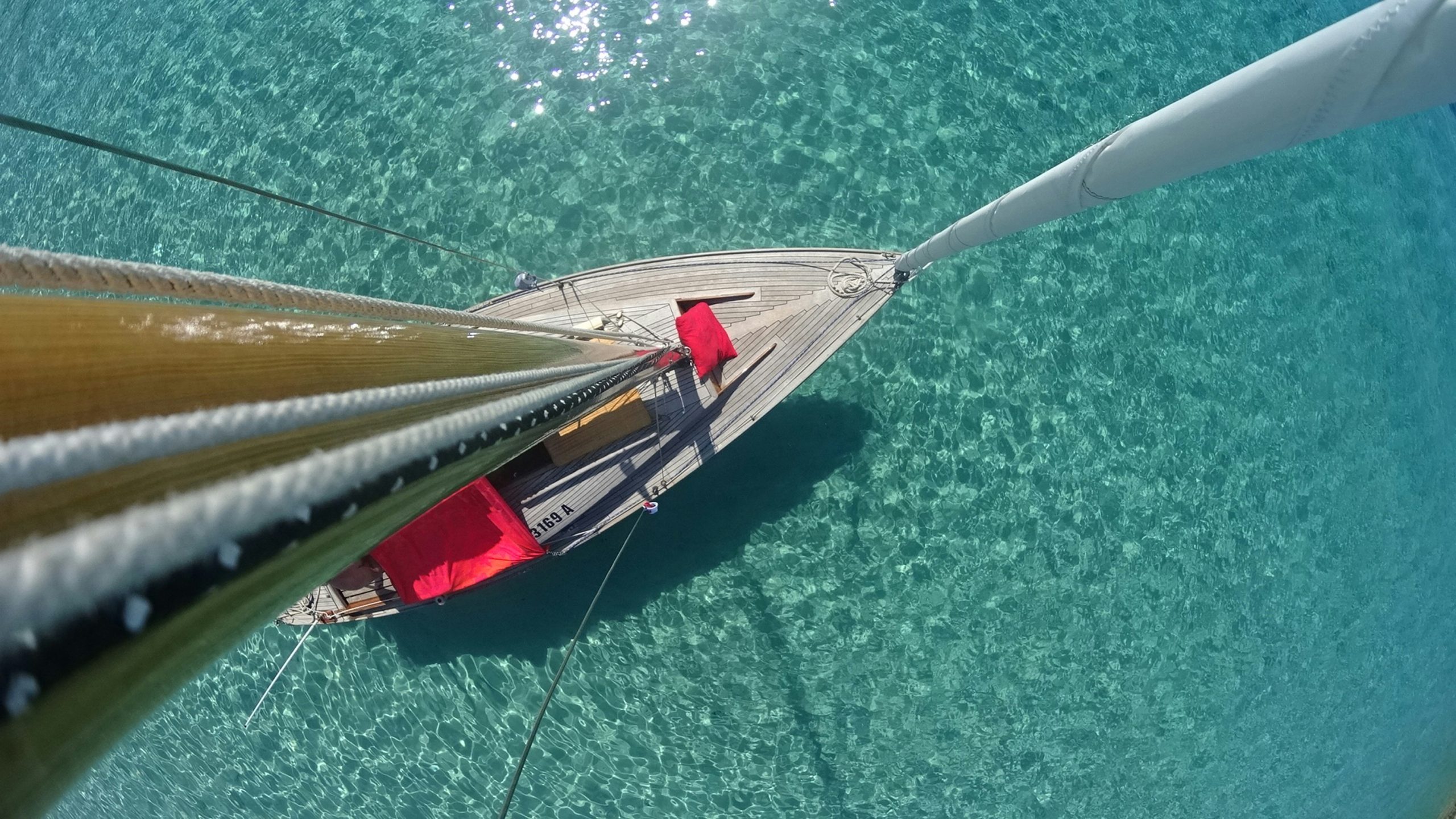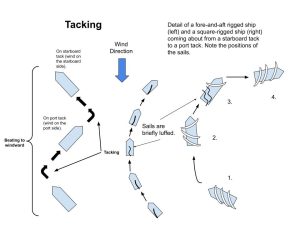Adjusting the stays and shrouds on your sailboat is not just a technical task; it’s an art that connects you with your vessel and the water beneath it. Whether you’re a seasoned sailor or just starting your nautical journey, understanding how to properly tune your rigging can make a world of difference in your sailing experience. This guide will take you through the steps, ensuring your sails catch the wind perfectly and your boat glides smoothly across the waves. Let’s dive in and discover the essentials of achieving that perfect balance and harmony with your sailboat.
Introduction to Stays and Shrouds
Stays and shrouds are critical components of a sailboat’s rigging system. Their primary function is to support the masts, ensuring the stability and overall balance of the vessel. Understanding their roles and differences is critical for proper maintenance, adjustment, and to ensure optimal performance.
Definition and Function
Stays are rigging lines that run fore and aft, connecting the mast to the boat’s bow (the front) and stern (the rear). Their primary function is to stabilize the mast against forward and backward movement. Shrouds, on the other hand, are rigging lines that run on either side of the mast, connecting it to the sides of the boat. Shrouds provide lateral (side-to-side) support, ensuring that the mast remains upright and stable.
Importance of Proper Tension
The tension on stays and shrouds can significantly impact your sailboat’s performance. Insufficient tension can lead to excessive mast movement, potentially causing damage to the rigging or the mast itself. Conversely, excessive tension can cause undue stress on the rigging components, leading to their premature wear or failure. Properly tuned stays and shrouds contribute to the boat’s overall stability, maneuverability, and sailing efficiency.
Tools and Materials Required
Before adjusting the tension on your sailboat’s stays and shrouds, it’s essential to have the necessary tools and materials at hand. This ensures the process is carried out efficiently and accurately.
Essential Tools
- Tension Gauge: A precision tool used to measure the tension in the rigging lines accurately.
- Wrenches and Pliers: Essential for making adjustments to turnbuckles and other fittings.
- Tape Measure: Useful for measuring the initial and adjusted lengths of the stays and shrouds.
- Rigger’s Tension Tool: A specialized device that allows for easy tension adjustments on shrouds and stays.
Required Materials
- Replacement Shrouds/Stays: If any component appears worn or damaged, replacement is necessary.
- Lubricant: For ensuring smooth operation of turnbuckles and reducing the risk of corrosion.
- Safety Gear: Gloves and safety glasses to protect yourself during the adjustment process.
Having the right tools and materials ensures you can carry out the adjustment process with precision and safety.
Steps to Adjust Tension on Stays
Adjusting the tension on stays requires a methodical approach to ensure that the mast is correctly balanced and secured. Here is a step-by-step guide to making these adjustments.
Step 1: Inspect the Rigging
Before making any adjustments, carefully inspect the rigging for any signs of wear, corrosion, or damage. Replace any compromised components to avoid potential failures during or after adjustment.
Step 2: Measure Initial Tension
Using a tension gauge, measure and record the initial tension of each stay. This provides a baseline for the adjustments. It’s crucial to have this reference as it helps you track progress and make more precise adjustments.
Step 3: Loosen the Backstay
Before adjusting the forestay, loosen the backstay slightly. This will reduce the forward tension on the mast, making the forestay adjustment more manageable.
Step 4: Adjust the Forestay
Using a wrench, tighten or loosen the turnbuckle on the forestay to achieve the desired tension. Frequently measure the tension with the tension gauge to avoid over-tightening or under-tightening.
Step 5: Adjust the Backstay
After the forestay is appropriately tensioned, proceed to adjust the backstay. Tighten or loosen the turnbuckle on the backstay, measuring the tension frequently to ensure it matches the desired specifications.
Step 6: Test for Mast Rake
Once both stays are adjusted, test the mast rake, which is the aft-leaning angle of the mast. This can be measured by hanging a weight from the main halyard and observing where it intersects with the boom. Adjust the stays further if necessary to achieve the desired rake.
Steps to Adjust Tension on Shrouds
Shrouds require careful adjustment to maintain the lateral stability of the mast. Follow these steps to adjust the shroud tension effectively.
Step 1: Inspect the Rigging
Just as with the stays, begin by inspecting the shrouds for any signs of wear, corrosion, or damage. Replace any suspect components to ensure overall integrity.
Step 2: Measure Initial Tension
Using the tension gauge, measure and record the initial tension of each shroud. This provides a reference point, making it easier to track adjustments.
Step 3: Initial Adjustments
Start with the lower shrouds. Use a wrench to adjust the turnbuckles, either tightening or loosening to bring the tension close to the desired levels. Frequently measure the tension to ensure accuracy.
Step 4: Adjust Upper Shrouds
Once the lower shrouds are properly tensioned, proceed to adjust the upper shrouds. As with the lower shrouds, use the turnbuckles to make adjustments, frequently measuring the tension.
Step 5: Check Mast Alignment
After adjusting both lower and upper shrouds, check the mast alignment. Ensure that the mast is straight and not leaning to one side. Use the tape measure to compare the tension on both sides, making minor adjustments as necessary.
Step 6: Recheck All Tensions
Once the mast is correctly aligned, recheck the tension on all shrouds and stays. Ensure that each is at the desired tension level, making final adjustments as necessary.

Balancing Rake and Bend
Adjusting the rake and bend of the mast can significantly impact your sailboat’s performance. Understanding how to balance these elements is critical for achieving optimal sailing conditions.
Understanding Mast Rake
Mast rake refers to the aft-leaning angle of the mast. Proper rake affects the boat’s helm balance and sail shape. Too much rake can cause excessive weather helm, while too little can result in a lack of responsiveness.
Adjusting Mast Bend
Mast bend refers to the curvature of the mast when viewed from the side. It helps control sail shape and performance in various wind conditions. Adjusting the mast bend involves fine-tuning both the forestay and the shrouds.
Balancing Act
Achieving the correct balance between mast rake and bend requires careful adjustments and testing. It’s essential to test your boat under actual sailing conditions to evaluate the impact of these adjustments and make further modifications as necessary.
Common Mistakes and How to Avoid Them
Adjusting the tension on stays and shrouds can be a complex process. Common mistakes can lead to suboptimal performance or even damage to your sailboat. Being aware of these pitfalls can help you avoid them.
Over-tightening or Under-tightening
One of the most common mistakes is over-tightening or under-tightening the stays and shrouds. Over-tightening can cause excessive stress on the rigging components, leading to premature wear or failure. Under-tightening can result in insufficient support, causing mast movement and potential damage.
Ignoring Mast Alignment
Failing to check and adjust mast alignment can lead to an imbalanced mast, adversely affecting the sailboat’s performance. Always ensure the mast is straight and correctly aligned after adjusting the tension on stays and shrouds.
Skipping Regular Inspections
Regular inspections of the rigging are crucial for identifying potential issues before they become significant problems. Skipping these inspections can lead to undetected wear and damage, compromising the sailboat’s safety and performance.

Maintaining Proper Rigging Tension
Once the tension on your stays and shrouds is correctly adjusted, maintaining this tension is vital for long-term performance and safety. Regular checks and maintenance can help preserve the rigging’s integrity.
Routine Inspections
Perform routine inspections of the rigging, checking for any signs of wear, corrosion, or damage. This includes examining the stays, shrouds, turnbuckles, and other rigging components. Regular inspections help identify and address potential issues before they become major problems.
Seasonal Adjustments
Changes in temperature and humidity can affect rigging tension. Make seasonal adjustments to ensure the stays and shrouds remain correctly tensioned throughout the year. For example, colder temperatures can cause the rigging to contract, requiring slight loosening, while warmer temperatures may cause expansion, necessitating slight tightening.
Proper Storage
When not in use, store your boat in a manner that reduces stress on the rigging. This includes using supports to relieve pressure from the mast and rigging components. Proper storage helps extend the lifespan of the rigging and reduces the need for frequent adjustments.
Advanced Techniques for Experienced Sailors
For seasoned sailors, advanced techniques can further optimize the tension on stays and shrouds, enhancing overall sailboat performance.
Tuning for Specific Conditions
Depending on the sailing conditions, you may need to adjust the tension on stays and shrouds differently. For example, in strong winds, slightly increasing tension can provide better sail performance and stability. Conversely, in lighter winds, reducing tension can improve sail shape and responsiveness.
Table: Tuning Adjustments for Various Conditions
| Condition | Adjustment | Rationale |
|---|---|---|
| Strong Winds | Increase Tension | Enhances stability and sail performance |
| Light Winds | Decrease Tension | Improves sail shape and responsiveness |
| Rough Seas | Balance Tension Evenly | Ensures overall stability and balance |
| Calm Seas | Fine-tune for Mast Bend | Optimizes sail shape for light conditions |
Utilizing Advanced Tools
Advanced tensioning tools and rigging guides can provide more precise measurements and adjustments. These tools can help achieve optimal tension levels more efficiently, especially for experienced sailors aiming for peak performance.
Professional Rigging Services
For complex adjustments or when dealing with high-performance sailboats, consider enlisting professional rigging services. Experienced riggers have the expertise and equipment to make precise adjustments, ensuring your sailboat performs at its best.

Conclusion
Understanding and adjusting the tension on stays and shrouds is a vital aspect of sailboat maintenance and performance. By meticulously following the steps and guidelines outlined, you can ensure your boat’s rigging is correctly tensioned, enhancing its stability, safety, and overall sailing experience. Regular inspections, routine maintenance, and advanced techniques for experienced sailors contribute significantly to the longevity and performance of your vessel’s rigging system.
Proper tension ensures not only the optimal functionality of your sailboat but also contributes to a safer and more enjoyable sailing experience. Emphasizing the importance of balanced adjustments, routine inspections, and the prudent use of tools and materials is essential in maintaining the mast’s structural integrity and overall performance.
Your investment in time and effort to understand and adjust the tension on stays and shrouds will undoubtedly pay off, providing you with a reliable, high-performing sailboat ready to tackle the varying conditions of the sea.





